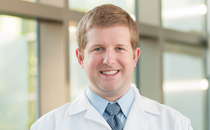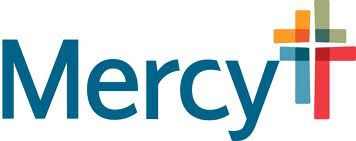Many of us are not only taking care of our own kids, we’re also keeping a close eye on the health of our parents as they get older and have more medical issues. It’s sometimes hard to know the difference between “normal” aches and pains associated with getting older or a more serious issue that needs medical attention.
This month we’re taking a look at some of the most common problems aging parents experience when it comes to their neck and back. We asked an orthopedic surgeon, Dr. Charles Jones III of Mercy, to explain what the most common ailments are and what we need to know about them in order to get our aging parents and grandparents the help they may need.
The spine grows from the time of conception until we’re about 16 years old. From that point on, the spine’s ability to naturally repair itself starts to decline and the discs, ligaments and joints begin to dry out. There are many issues that can be caused by this aging process, but the most common ones that Dr. Jones sees in his office are neck and back pain from these 4 conditions:
- spondylosis
- herniated discs
- spinal stenosis
- scoliosis
Spondylosis (spinal arthritis) is incredibly common and considered a normal part of aging. Changes that occur include bone spurs, joint cysts, and flatted discs. Provided that the spinal cord and nerve are free, the most often observed symptoms are back and neck pain.
Herniated discs most frequently occur in the neck (cervical spine) and the lower back (lumbar spine). Because of the way the spine is made, the most likely areas for herniation are directly in the path of nerves so they affect the arms and legs – often causing severe pain. Physical therapy and steroid injections provide good results over a period of weeks to months. If necessary, surgery may provide relief through decompression of pinched nerves and stabilization with limited fusions.
Spinal Stenosis: When multiple nerves are being squeezed by a combination of worn-out discs and arthritic changes, the cause may be spinal stenosis. Most often in the lumbar spine, patients will complain of leg pain and feeling of “heaviness” that affects one or both legs, particularly when walking. When symptoms become so severe that everyday activities become challenging, it’s time to consider surgery to remove bone spurs, overgrown joints, and thickened ligaments causing the stenosis.
Scoliosis (or a “curved spine”) is another common finding in patients with advanced arthritis or those who developed their curves as a child and progressed without treatment. In its own right, the abnormal curve doesn’t typically cause a problem until it grows to the point where nerves are pinched or back pain becomes severe.
The process of aging affects the spine in many ways, most of them benign. If symptoms of pain negatively interfere with quality of life, it’s time to consult an orthopedic surgeon.
Most conditions can be successfully managed with non-surgical treatments including therapy and injections, before considering surgical options to address nerve compression and spinal instability. Dr.  Jones suggests that patients get to know their surgeon and feel comfortable with their diagnosis and treatment plan.
Jones suggests that patients get to know their surgeon and feel comfortable with their diagnosis and treatment plan.
If you need more info about back and neck pain in adults or in elderly patients, you can schedule an appointment with Dr. Charles Jones lll, MD, or his colleagues at Mercy Clinic Orthopedics. To reach them, call (479) 271-9607 or visit mercy.net/nwa.

